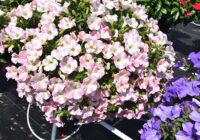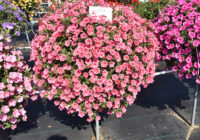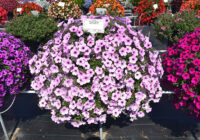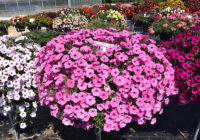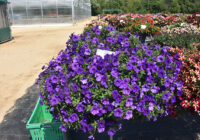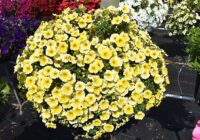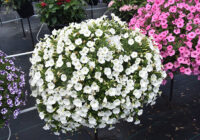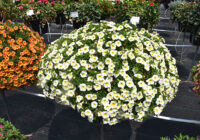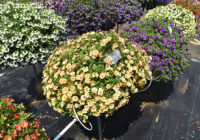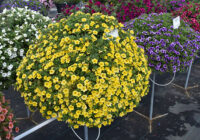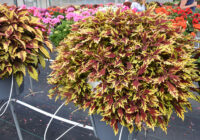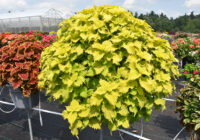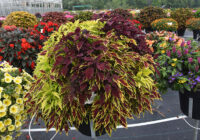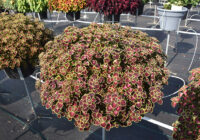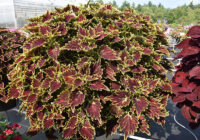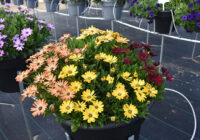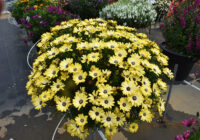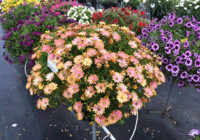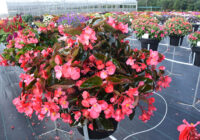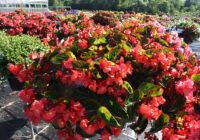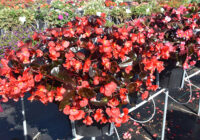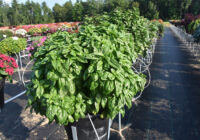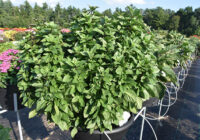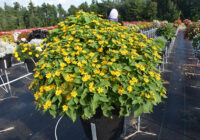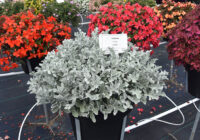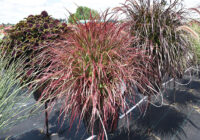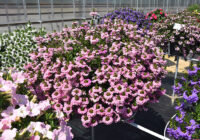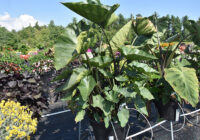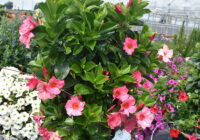
Features
Flowers
New Varieties
Settling scores at the Sawaya Gardens
In this second part of the Sawaya Garden Trials report, we look at high-scoring genera and representative varieties using the new points-based grading system.
January 24, 2022 By Melhem Sawaya
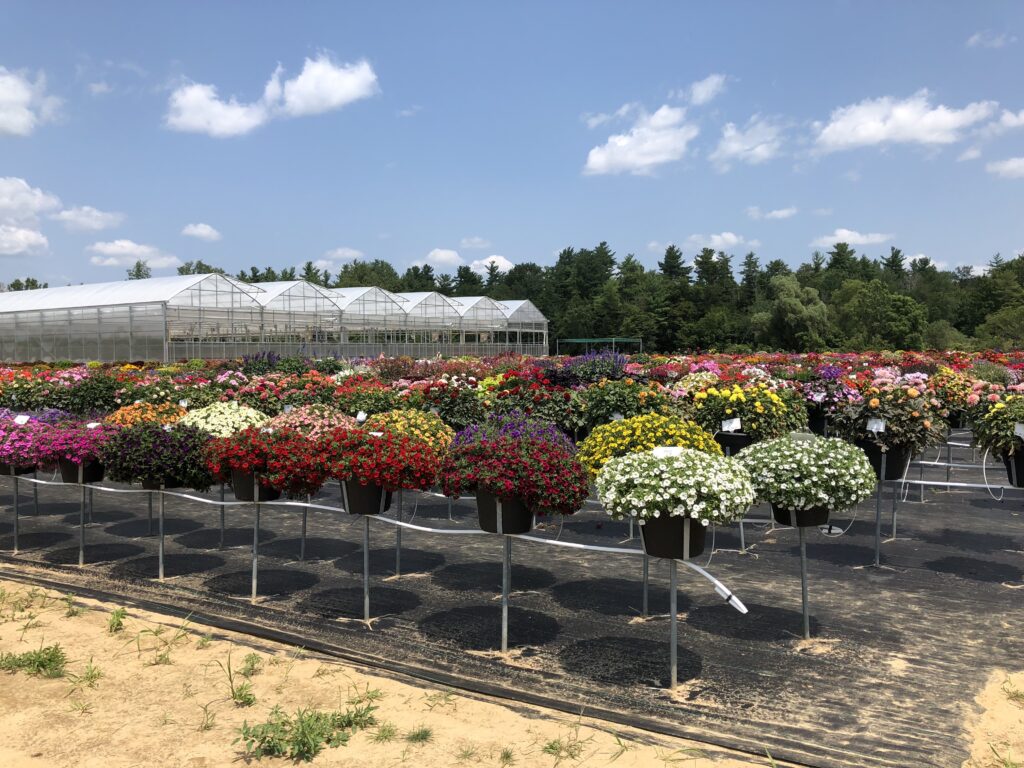 Sawaya Garden Trials in Waterford, Ont.
Sawaya Garden Trials in Waterford, Ont. In last month’s issue of Greenhouse Canada, part one of this article discussed how some products tend to look great at purchase time but do not last until mid-June. Meanwhile, other products do not look so great at purchase time, but improve rapidly when they are in the garden and will last till frost. Using examples from the Sawaya Garden Trials, I shared varieties that fit both scenarios.
In the last issue, I also shared some important reasons for staying informed about the different cultivars firsthand. In addition to differences in appearance at purchase time, some plants simply need a different sized container or a different retail time to show off their potential. In this second part of the Sawaya Garden Trials report, I will share information on the genera which customers usually gravitate towards. Of course, there are varieties in each genus that perform much better than others.
This year, I also introduced a points-based grading system. Varieties were scored based on the following characteristics with their weighting in brackets:
- General ease of maintenance (3)
- No need for deadheading (3)
- Heat tolerance(10)
- Cold tolerance (4)
- Rain tolerance (6)
- Wind tolerance (4)
- Draught tolerance (3)
- Flower recovery after the rain (10)
- Flower power (7)
- Disease and insect tolerance (5)
- Demand for fertilizer (2)
- 10-metre plant – I.e., Looks good only from 10 metres away or less (5)
- 10-to-100 metre plant – I.e., Looks just as great from 100 metres away as it does 10 metres away (10)
- Performance longevity (8)
- Input cost – Price, number of plants per pot and required growing time (10)
- Customer appeal (10)
These were the criteria on which I based the evaluation of each cultivar. If you think I missed some aspect that should be included in the evaluation, or if the grading should be adjusted, I will gladly look at suggestions.
For the simplicity of this article, the plants are scored as:
- Excellent (90-100)
- Very good (80-89)
- Good (70-79)
- Fair (50-69)
- Poor (below 50)
Before you start looking for the poorest scoring plants, I did not include any in this article. However, the breeders know it, and I am sure they are improving the variety or discarding it.
Here were some of the best scoring varieties, grouped by genus.
Petunia
As a genus, the petunia is the best for showcasing outdoors in the garden, especially ones that bounce back fast after the rain. That is why at the Miracle Gardens in Dubai, UAE, the only genus there is the petunia – with eight million of them on an eight-acre site. The plants are there from November till April, with little rain and warm-to-hot weather. Take a minute and Google ‘Miracle Gardens Dubai’ to see what I am talking about.
In Canada, we have hot weather and rain, and this year, there was lots of it. Some petunias bounce back in a matter of hours after the rain stops. Petunias are 10-to-100-metre plants – the highlights of our gardens. However, they would have been in much greater use if we could have better educated the consumer about these hungry plants. There are many poor varieties of petunias out there, so selecting good to excellent varieties is a step towards quality performing plants and successful customers. The following are a few varieties of petunias that scored from Good to Excellent – but this is not an exhaustive list.
Petunia Surfinia Heartbeat Improved (1) develops unique heart-shaped flowers with ‘Good’ performance.
Petunia Surfinia Purple Heart (2) is more vigorous than Heartbeat and has most of the qualities that place it in ‘Good’ standing.
Petunia hybrida Dekko Star Coral (3) and Petunia hybrida Dekko Lavender Eye (4) are from a very predictable trailing series of medium-sized flowers with ‘Very Good’ standing.
Petunia ColorRush Pink (5) and Petunia ColorRush Blue (6) are both trailing petunias with medium-to-large flowers. Both perform great either in combinations or on their own. In ‘Very Good’ standing.
Petunia Bee’s Knees (7) showed well throughout the whole summer, especially with its unique deep yellow colour and its cascading to trailing habit, joining those in ‘Very Good’ standing.
Petunia Supertunia Mini Vista White (8) is a vigorous trailing petunia with flowers that are not affected by rain nor wind. The hotter it is, the more the flowers emerge to cover the entire plant. Joining it is Petunia Supertunia Vista Bubblegum (9), a larger flower variety with the type of performance that all breeders try to achieve. I would say with confidence that Bubblegum is the champion of all petunias. Both Vistas scored on the higher end of the ‘Excellent’ standing.
Calibrachoa
Calibrachoa is the most floriferous plant of all, flourishing in the heat when it is very sunny. It can also be grown cool and recovers from the rain fast. A 10-to-100-metre plant, it makes any garden, patio, store front, driveway, or landscape look so much better. The ability to be highly floriferous comes from its branching power where fresh flowers are formed. At the same time, this also explains the small-sized flowers. More branching means more flowers but usually smaller ones. Here are some representative varieties from the trials:
Calibrachoa Cha-Cha Frosty Lemon (10) is somewhat more vigorous but full, which makes it a great garden performer. ‘Very Good’ standing.
Calibrachoa Superbells Double Amber (11) is one member of the double-flowered Superbells series that gives this calibrachoa a more premium feel when it is marketed accordingly. It’s a hit in the garden and was in ‘Very Good’ standing.
Calibrachoa Hybrida Cabrio Yellow (12) is the rebel of the Cabrio series which is supposed to be compact – but not Cabrio Yellow. The whole series performed well in the trials and were in ‘Good’ standing overall.
Coleus
Coleus is the most colourful of the leaf plants. We could almost even call it a flower, and why not? We call poinsettias flowering plants because of their colourful bracts. Coleus is very popular with gardeners, especially now with the foliage craze, as well as the colours offered by different coleus varieties. If we exclude flower power from our score sheet, most of the coleus varieties on the market would be classified from Very Good to Excellent. They look great in landscape, gardens, and large containers from day one to frost. There are so many great varieties on the market, and your choice comes down to your leaf colour preference or vigour. Here are a few varieties that reflected the different habits available; all good-lookers.
Coleus FlameThrower Sriracha (13) comes in a very hot colour with a medium growth habit that, like all coleus, can be grown in large pots or in gallons destined for landscapes wherever it is grown. It is a winner that received ‘Very Good’ standing.
Coleus Wasabi (14) is on the larger side and is great in landscape, but make sure the pots are placed in a heavy steel or concrete container or else the wind will blow it away due to its enormous size. This is the same with many of the exceptionally large coleus, but in the landscape, they should be fine. In ‘Good’ standing.
Mixmasters Pico de Gallo (15) is a combination made up of members in the same coleus genus, which makes the combination more synergetic and colourful. In ‘Good’ standing.
Coleus Great Falls Iguazu (16) is one of the trailing coleuses that is not going to disappear in a combination. In ‘Good’ standing.
Coleus Main Street Bourbon Street (17) is a medium-growth coleus and very colourful. It is sturdy in the garden and works well in containers, landscape, and in some combinations. In ‘Very Good’ standing.
Osteospermum
The current Osteospermum are no longer what they used to be. Breeders have done a great job in creating Osteospermum varieties that do not just tolerate the heat, but flourish in it. It is up to us to retrain the consumer to see these new features.Growing Osteospermum for early spring is expensive, but growing it for the regular spring season is great. By re-educating the consumer, we will no longer be stuck with Osteospermum because it will not be a cool-weather crop anymore. Here is evidence of some Osteospermum cultivars that did well throughout the summer.
Osteospermum Akila Sunset Shades (18) is a mix from seed that was very colourful all season long and looked great even with little deadheading. In ‘Good’ standing.
Osteospermum ecklonis Tradewinds Lemon Zest (19) brought some bright yellow colour with flowers that never stopped, even during the very hot weather experienced this past summer. In ‘Good’ standing.
Osteospermum ecklonis Osticade Daybreak (20) showcased some very colourful shades of salmon and yellow, flowering through the whole summer as well. In ‘Good’ standing.
Geranium
Every year, we cover the Geranium genus in detail, so this year I am giving it a shorter review – and not because it is not important. On the contrary, the geranium is still one of the leading, if not the leading, bedding plants out there.
We know geranium flowers need deadheading after every rain, and if not, the botrytis-infected flowers will kill off the plants.
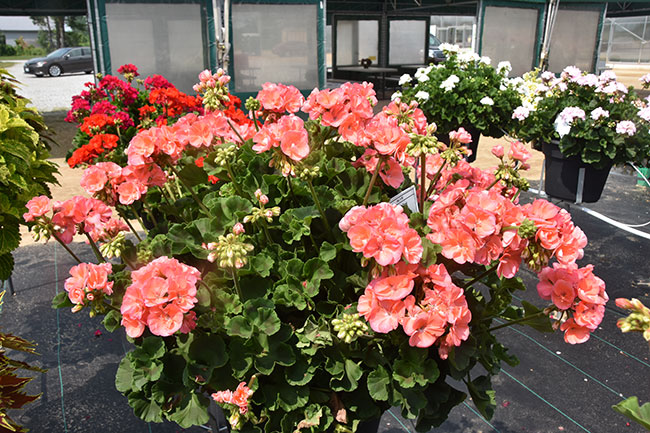
Geranium Zonal Dynamo Salmon Improved (21)
Geranium Zonal Dynamo Salmon Improved (21) is one of the colours in my favourite series due to its medium vigour and flower power. Dynamo Salmon received ‘Good’ standing.
Begonia
The begonia is one of the largest genera among ornamental flowers and there are differing species between the fibrous, Boliviensis, Rieger, and Rex.
For a long time, there were only fibrous wax leaf begonias sold as the main bedding plant variety. Breeders were going after compact habits and early flowering, up to the point where the plants were almost flowering before the leaves emerged. Luckily, this trend is changing. We are now getting varieties that are robust with good flower power, standing up to various weather conditions much better than any other species.
The Rieger begonia was always a popular indoor pot plant, but in the last 15 years, it has become a big garden performer.
The Boliviensis begonia is the newcomer and it is becoming popular in bedding plant applications due to large strides in new breeding.
There is enough to write an entire article on begonias, but for now, here are a few cultivars from our trials:
Begonia I’CONIA Miss Montreal (22) and Begonia I’CONIA Portofino Hot Orange (23) are two examples among a vast variety of Boliviensis begonias that have excellent garden performance in full sun and can do well in semi-shade. They can get by with about four hours of sun each day, but to shine, they should receive over six hours a day. Little deadheading needed, they recover fast after a rain and produce mounds of colourful leaves that are covered with double blooms in spectacular colours. The key to a successful crop of Boliviensis begonias is to grow them in the greenhouse in full sun right from day one. Miss Montreal and Hot Orange were both in ‘Very good’ standing.
Begonia Megawatt Rose Bronze Leaf (24), Begonia x hybrida Viking Explorer Red on Green (25) and Begonia x hybrida Viking Red on Chocolate (26) are all examples of new begonia breeding that puts vigour into the growth of wax begonias. These fibrous begonias are not only able to take cool, hot or very hot weather, but they offer some degree of drought recovery and remain in excellent condition after the rain. This entire species should be called a dream crop because it can be produced economically, has great greenhouse performance and delivers fantastic garden performance. Consumer success in growing the wax begonia on steroids is higher than average, which is why these varieties, the Big begonias and the Whoppers all received ‘Excellent’ standing.
Garden Vegetables
I know that there are many vegetable varieties available for our gardens. To cover them all, we would need more than one article, but here I could not resist sharing with you two varieties of basil that were outstanding in our trials. They were watered like each of the other three thousand varieties on-site.
Basil Everleaf Emerald Towers (27) gave us plenty of fresh basil leaves to last the whole summer along with lots to dry and save up for the winter – all with just one pot. To my surprise and excitement, there was no trace of downy mildew.
Basil Everleaf Thai Towers (28) had the same characteristics as Emerald Towers, but with added licorice-flavoured leaves that suit Thai cuisines.
If we had graded them, these two varieties of basil, in addition to Amazel Basil, would have received ‘Excellent’ standings.
Other Exceptional Choices
Among the next eight varieties, some were old while others were new, but all displayed exceptional garden performance.
Melampodium paludosum Showstar (29) is not a new variety, but it is one that is underused. Over the past four trials, Showstar has shown great performance. No deadheading, rain-proof, and loves the heat, the variety delivered a great look all through the season and was scored as ‘Very good.’
Centaurea Chrome Fountain (30) was new to me and our trials. Like coleus, if flowering was not part of the evaluation, this Centaurea would have received ‘Excellent’ standing because everything else is perfect performance-wise.
Pennisetum Graceful Grasses Fireworks (31) is not a new variety but it is colourful. Because it does not become overly large, this variety will enhance any combination in a center spot or beautify any landscape. This grass works well in all weather conditions. ‘Very Good’ standing.
Scaevola aemula Abanico Rose (32), along with the blue and white entries in this series, have been great performers for three years in a row. Like other scaevola, it performs well in all weather conditions and keeps flowering with no setbacks from the rain or the heat. ‘Excellent’ standing.
Colocasia Coffee Cups (33) is a tropical that works well in Ontario summers. It overshadows most other genera with its large dark chocolate leaves that keep unfolding as long as the plant is kept moist. Great in any pot or landscape. In ‘Very Good’ standing.
Mandevilla Madinia Coral Pink (34) is one variety of many on the market. An elegant plant with durable performance and excellent garden performance, the more important aspect is how consumer-friendly it is. It offers a great show the whole summer long and it can be used in planters, landscape, or hangers. Definitely in ‘Excellent’ standing.
Melhem Sawaya of Focus Greenhouse Management is a consultant and research coordinator to the horticultural industry. He welcomes comments and can be reached at mel@focusgreenhousemanagement.com.
All varietal photos courtesy of M. Sawaya.
Print this page
